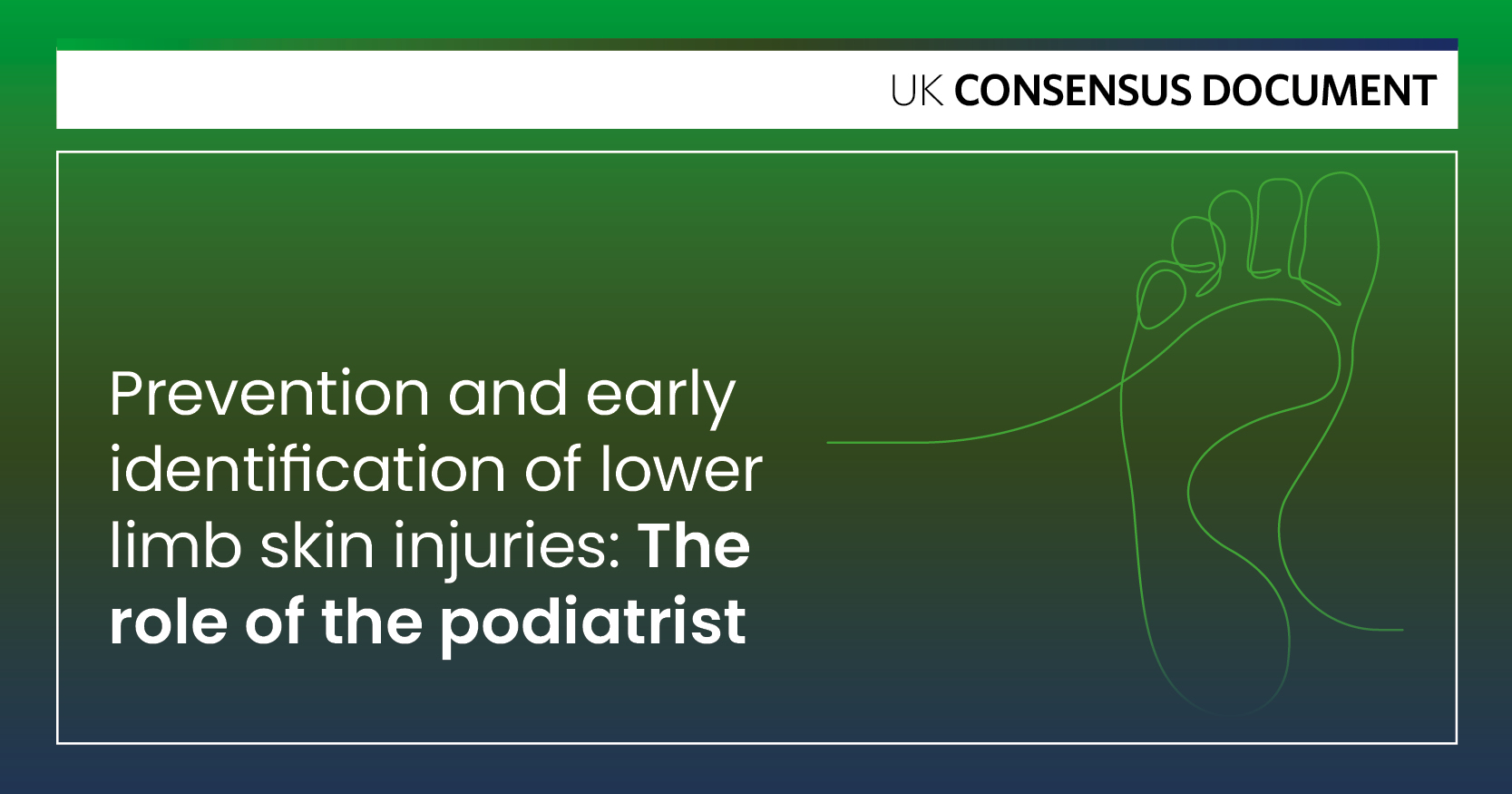Preventing foot ulceration is a priority for any healthcare practitioner involved in the care of people with diabetes. Callus formation often precedes the development of diabetic neuropathic ulcers, and it is known that foot ulceration precedes 84% of diabetes-related lower-limb amputations (Pecoraro et al, 1990). As most clinicians involved in the management of the diabetic foot will have witnessed, callus’ tend to form at pressure points in ill-fitting shoes, and this phenomena is compounded by the effects of neuropathy on patterns of weight bearing.
This is confirmed by the literature, with Apelqvist et al (1990) identifying footwear as the precipitating cause in the majority of diabetic foot ulcers occurring on the toes, and a significant number of lesions elsewhere on the foot. McGill et al (2005) found that footwear-related trauma was the precipitating factor in 54% of ulcers in their study of 250 people with diabetic neuropathy
In an effort to avoid the possibly devastating consequences of ulceration, specialist therapeutic footwear and foot orthoses are often recommended by clinicians. The proper use of therapeutic footwear should avoid the trauma that is too often associated with retail footwear on vulnerable feet.
There is some evidence, although it is limited, to suggest the effectiveness of therapeutic footwear in preventing reulceration of the diabetic foot. See, for example, Chantelau et al (1990), Chantelau and Haage (1994), Wooldridge et al (1996), Reiber et al (2002) and Busch and Chantelau (2003). The use of therapeutic footwear to avoid reulceration was found to be effective particularly when the shoes were provided as one element of a package of care that also included callus debridement and patient education (Edmonds et al, 1986; Uccioli et al, 1995; Dargis et al, 1999). However, two reviews of the literature both concluded that, although some protective benefits bestowed by therapeutic footwear could be seen, due to methodological issues in the published studies, the results were inconclusive (Maciejewski et al, 2004; Williams, 2007).
Thus, the evidence to support the use of therapeutic footwear in the prevention of reulceration in the high-risk diabetic foot is limited, and even less conclusive in the prevention of ulceration in the low- to moderate-risk diabetic foot. As identified by Cavanagh (2004) “a large scale study combining effective design, shoe prescription and appropriate patient selection to enable thorough verification of footwear effectiveness remains to be conducted.”
More recently, Bus et al (2008) carried out a systematic review that looked to assess new contributions to the literature since the writing of the two previous reviews (Maciejewski et al, 2004; Williams, 2007). This review suggests that little has changed and that, as yet, none of the recommendations for research into therapeutic footwear have been undertaken. Despite advances in computer-aided design and manufacturing technology being available for producing therapeutic footwear, the provision of footwear as a therapeutic intervention remains a “craft”, rather than a science.
Regardless of the limited evidence, therapeutic footwear remains the intervention of choice for offloading the non-ulcerated diabetic foot. Therefore, the publication of Tyrrell and Carter’s Therapeutic Footwear: A Comprehensive Guide (2009) is a timely resource that highlights and instructs on footwear as a key component of foot health management.
Some of the important aspects in relation to therapeutic footwear assessment, manufacture and provision as identified by Maciejewski et al (2004), Williams (2007), and Bus et al (2008) are covered by this book. It is an extremely comprehensive guide (as it states in the title) to all aspects of footwear design, manufacturing processes and options for the practitioner. It provides much of what the practitioner needs for day-to-day clinical practice, but also provides the knowledge required by researchers aiming to investigate various aspects of footwear as a therapeutic intervention.
Tyrrell and Carter’s focus is not just on specialist therapeutic footwear, but more broadly they look at how retail footwear can be deemed therapeutic and protective, given certain design features. This is particularly useful for the management of the low- to moderate-risk diabetic foot.
The first chapter covers the historical and social context of footwear and its role in body image. Here the authors emphasise that, to our patients, footwear is something that is worn and has a direct impact on self-image (Williams and Nester, 2006). Practitioners often view footwear as a therapeutic intervention with little consideration to the impact it may have on the person. This chapter, therefore, provides the basis for a considered and holistic approach to footwear as an intervention.
The second chapter discusses the theories of behaviour change in the context of encouraging people to change their footwear habits and choices. Knowledge of these techniques is key to achieving success with footwear as a therapy, while allowing the person to participate in the decision-making process.
“Compliance” is a term that refers to the degree of constancy and accuracy with which a patient follows a prescribed therapy. The term has been frowned upon in recent years, following concern that labelling a patient “compliant” or “non-compliant” without consideration for the reasons why they follow or fail to follow advice is unhelpful. As described by Tyrrell and Carter (2009), healthcare delivery is now patient-focused and should be built on a concordant relationship between patient and practitioner. This relationship requires negotiation and agreement and has been shown to improve compliance with footwear (Williams and Meacher, 2001).
Further chapters cover footwear construction and manufacturing methods, retail footwear, shoes for special purposes and foot orthoses. The final chapter contains a series of case studies on the provision of footwear and its impact on the person. These cases serve to reinforce much of the theory covered in previous chapters.
The text is easy to read and the content is presented in sections and sub-sections for fast reference. The photographs and illustrations illuminate the processes described in the text. References to the literature and supportive materials are clearly displayed throughout, ensuring readers can explore particular topics more widely should they so wish.
Footwear solutions to the challenges posed by the diabetic foot are considered in several sections. One case study describes a person with foot complications associated with diabetes. Much of the information from other high-risk cases can be also be applied to the management of the diabetic foot.
This book covers what is currently considered to be best practice for the provision of therapeutic footwear and, although new technologies in measuring and providing specialist footwear are becoming steadily more mainstream, it will be some time before they are commonplace. Even when newer technologies are in regular use, this book will continue to provide the foundational knowledge practitioners need for the effective clinical use of therapeutic footwear.
This book is suitable for podiatrists, orthotists and other practitioners with an interest in footwear. Its content is relevant from the level of undergraduate students, through to those undertaking continuing professional development. There is no other text that covers this area so comprehensively. Therapeutic Footwear: A Comprehensive Guide is a must-have reference book for all practitioners working with people who use therapeutic footwear.
Therapeutic Footwear: A Comprehensive Guide
Authors: Wendy Tyrrell and Gwenda Carter
Publisher: Churchill Livingstone, London
ISBN: 978-0443-06883-6





